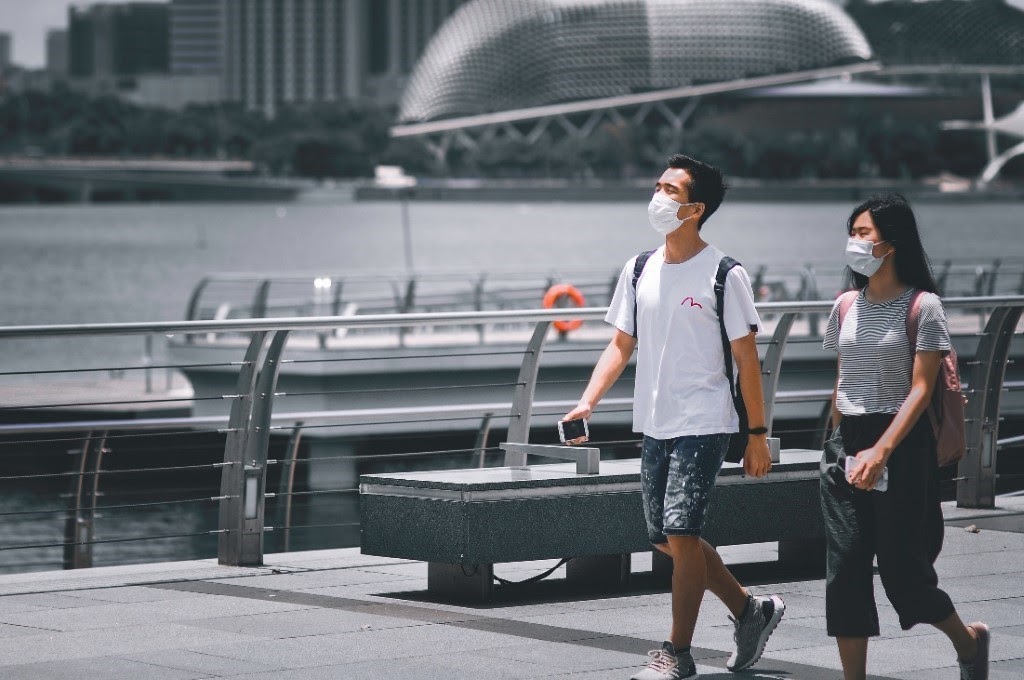Understanding the Connection Between Air Pollution and COVID-19

It’s known that air pollution is a contributing factor to a vast majority of respiratory health issues [1], so it’s not surprising that researchers are exploring the relationship between areas with high air pollution and the elevated health risks associated with COVID-19, the respiratory disease caused by the novel coronavirus. For those already facing compromised health conditions, current environmental challenges coupled with the emergence of the virus adds a significant layer of risk [2].
Small air pollution particles known as PM2.5, particulate matter smaller than 2.5 micrometers, generated namely from fuel combustion from cars, refineries, and power plants can lead to increased risk of premature death associated with lung disease and other lung related illnesses like asthma when inhaled long-term. The US EPA uses standard ASTM D2986 and PTFE Membrane filters to evaluate these fine particles as a measure of air quality.
A recent unpublished nationwide (USA) study from Harvard T.H. Chan School of Public Health found that people with COVID-19 who live in regions with high levels are air pollution are more likely to die from the disease than people who live in areas of relatively lower levels [5]. According to the study even a “small increase in long-term exposure to PM2.5 leads to a large increase in the COVID-19 death rate”. The study findings emphasize the value of adherence to existing air pollution regulation now and after the pandemic.
In recent months, global lockdown efforts aimed to reduce the spread of the virus, have resulted in a decline of air pollution in many countries across the world and serve as an important reminder that even minor improvements in air quality can improve our likelihood of staying healthy.
Air Pollution Statistics – The Numbers Build a Case for Plausible Concern
- The World Health Organization (WHO) indicates an estimated 7 million deaths occur worldwide each year from air pollution. [3]
- Although studies in China reflected a 60% reduction in nitrogen dioxide and a 35% reduction in particulate matter, secondary pollutant, surface ozone, increased by 150–200%. [1]
- Respiratory diseases have the potential to collapse the work force – a report indicates disabilities stemming from chronic disease cost the world economy 200 billion dollars in 2018 [4]
- A 2003 study found that patients with SARS, a respiratory virus closely related to Covid-19, were 84% more likely to succumb to death when exposed to higher levels of air pollution.
Additional Reading:
References
- https://www.medicalnewstoday.com/articles/the-dual-effects-of-covid-19-lockdowns-on-air-quality
- https://climatenexus.org/wp-content/uploads/2015/09/HumanHealthEffectsofAirPollutionKampaandCastanas.pdf
- https://www.who.int/health-topics/air-pollution#tab=tab_1
- https://www.weforum.org/agenda/2020/02/the-economic-burden-of-air-pollution
- https://www.hsph.harvard.edu/news/hsph-in-the-news/air-pollution-linked-with-higher-covid-19-death-rates/
- Most Viewed Blog Articles (5)
- Company News (285)
- Emerging Technologies (64)
- Microbiology and Life Science News (93)
- Water and Fluid Separation News (97)
- Filtration Resources (93)
- Product News (19)


![Join Sterlitech at BIO 2024 [Booth #5558]: Exploring the Future of Biotechnology](https://www.sterlitech.com/media/blog/cache/300x200/magefan_blog/b4.jpeg)



